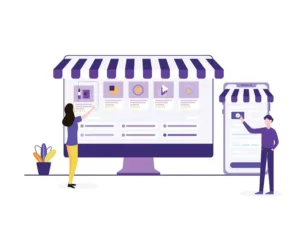In the world of social media marketing, Facebook remains a powerhouse platform for businesses and individuals alike. Two essential features of Facebook Pages – liking and following – often confuse users and marketers. This guide will clarify these concepts, highlight their differences, and offer practical strategies to maximize engagement and reach.
Understanding the Basics: Liking vs Following
Liking a Facebook Page
When a user likes a Facebook Page, they are essentially giving it a virtual thumbs up. This action:
- Adds the Page to the user’s list of liked Pages
- May display the Page on the user’s profile (depending on privacy settings)
- Historically, it automatically made the user a follower of the Page
However, it’s important to note that Facebook has changed this system over time.
Following a Facebook Page
Following a Page is a more direct way of staying connected with its content. When a user follows a Page:
- They see updates from the Page in their News Feed
- They don’t necessarily have to “like” the Page
- It allows for a more curated content experience
The Shift in Facebook’s Approach
In recent years, Facebook has made significant changes to how liking and following work:
- Liking a Page no longer automatically makes a user a follower
- Users can now like a Page without following it, and vice versa
- This change aims to give users more control over their News Feed content
Impact on Page Owners and Marketers
These changes have important implications for businesses and content creators:
- Engagement Metrics
- Page likes are no longer the sole indicator of potential reach
- Follower count has become a more accurate measure of audience size
- Content Visibility
- Posts are more likely to reach followers than those who merely like the Page
- This emphasizes the importance of creating engaging content to encourage the following.
- User Behavior
- Users may be more selective about which Pages they follow
- This can lead to a more engaged, but potentially smaller, audience
Strategies to Maximize Both Likes and Followers
- Create Compelling Content
- Consistently post high-quality, relevant content
- Use a mix of formats: text, images, videos, and live streams
- Encourage engagement through questions and calls-to-action
- Optimize Page Information
- Ensure your Page’s About section is complete and up-to-date
- Use keywords relevant to your business or niche
- Include links to your website and other social media profiles
- Promote Your Page
- Use Facebook Ads to reach a wider audience
- Cross-promote your Page on other social media platforms and your website
- Encourage existing followers to invite their friends to like and follow your Page
- Engage with Your Audience
- Respond promptly to comments and messages
- Host Q&A sessions or live events to foster community
- Show appreciation for your followers through exclusive content or offers
- Utilize Facebook Features
- Use Facebook Stories to increase visibility
- Create and manage Facebook Groups related to your Page’s niche
- Experiment with Facebook Watch for video content
- Monitor and Analyze Performance
- Regularly check your Page Insights for valuable data
- Track which types of posts generate the most engagement
- Adjust your strategy based on these insights
Conclusion
While increasing both likes and followers is beneficial, it’s crucial to focus on quality over quantity. A smaller, highly engaged audience can be more valuable than a large, disinterested one. Strive to:
- Build genuine connections with your audience
- Provide value through your content and interactions
- Foster a community around your brand or message
Understanding the difference between liking and following on Facebook can help you improve your social media presence and better connect with your target audience to achieve your marketing goals.




